Madeira has consistently been winning awards for being a top travel destination (you’ll see all the trophies upon landing at the airport). So with this in mind, what exactly are the top things to do in Madeira?
Is it a beach destination? What are the top hiking trails? Are there whales? Below, I’ve outlined all the best things to do in Madeira, based on my recent trip there.
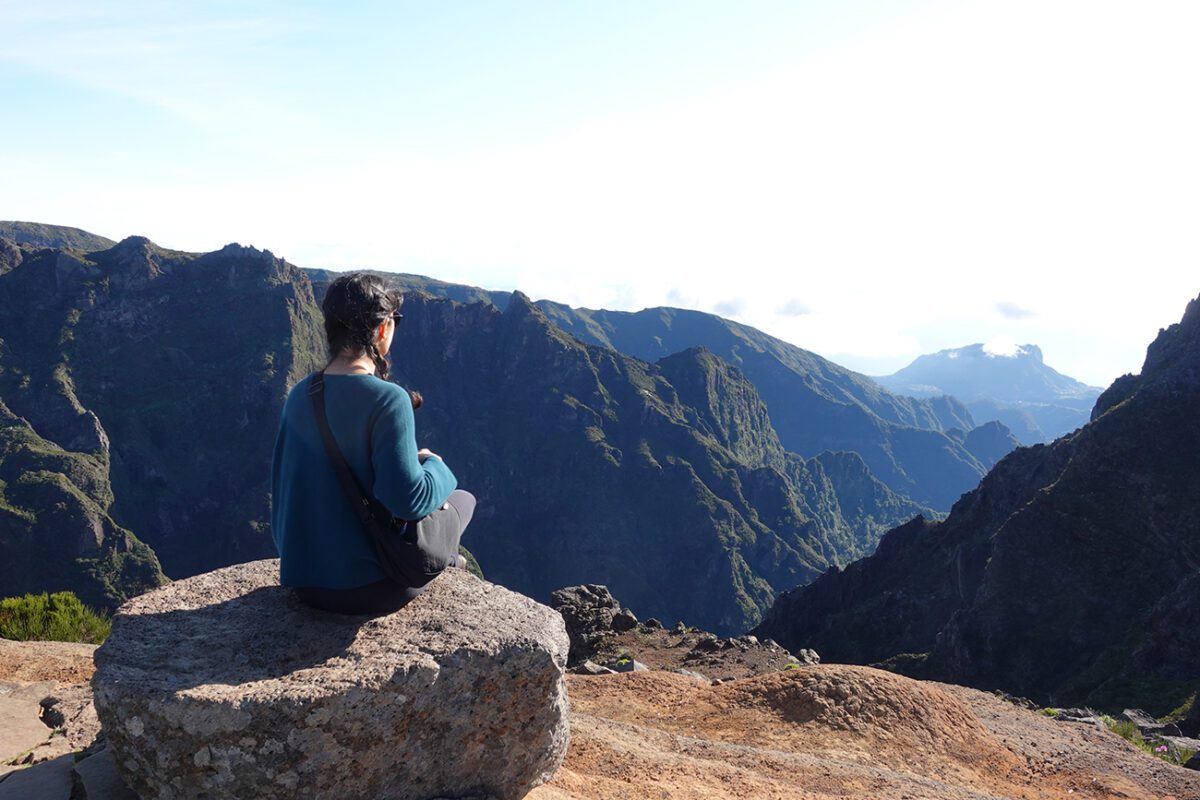
Madeira is a top destination for hiking, and there is a variety of trails, ranging from mountain peaks to more forest-y trails next to levadas, which are traditional man-made irrigation systems (more about these terms and other practical things to know about Madeira).
Hiking trails are maintained by the government and are denoted with the letters PR and a number, with each number assigned to a specific trail. Don’t forget to pay the small hiking fee by scanning the QR code at the entrance of each trail.
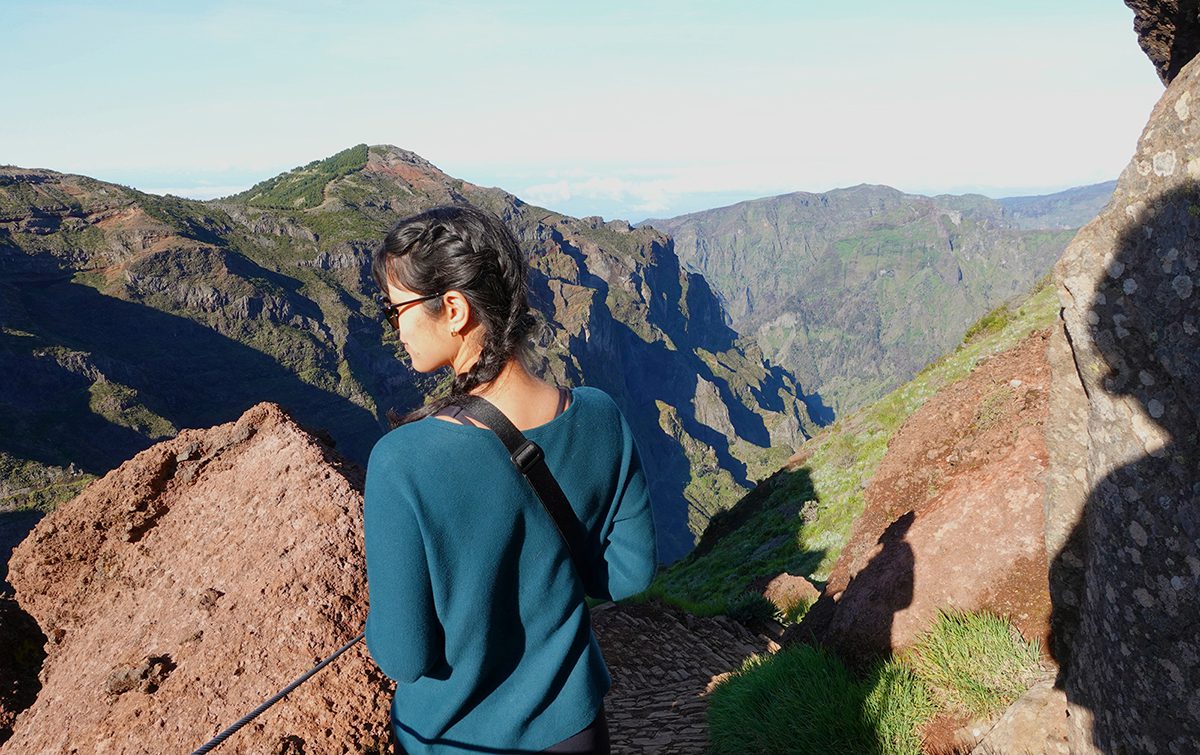
This is the most popular hike in Madeira, and here’s everything you need to know about this hike, including where to park if you rented a car, the best time to go, etc.
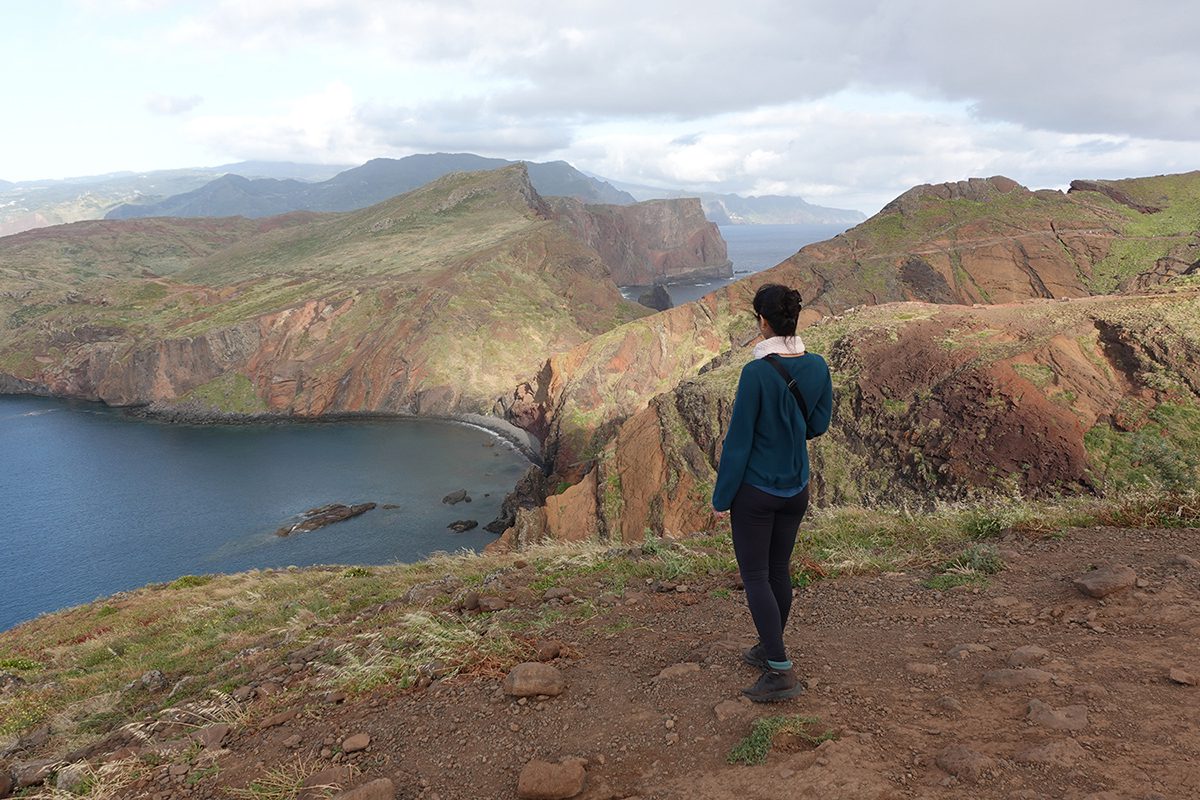
The second most popular hike in Madeira is the Ponta de São Lourenço trail on the eastern tip of the island. This is another hike that gets crowded and does not offer shade, just like PR 1, so it’s best to go early right around sunrise. Along the hike you will get beautiful views of the ocean.
This is a shorter and easier hike than the PR 1 Pico do Areeiro to Pico Ruivo trail. It’s about 3 km (1.8 miles) long, and takes about 1.5 hours to walk one way. It’s not a circular loop, so you will need to walk back the same way to the parking lot.
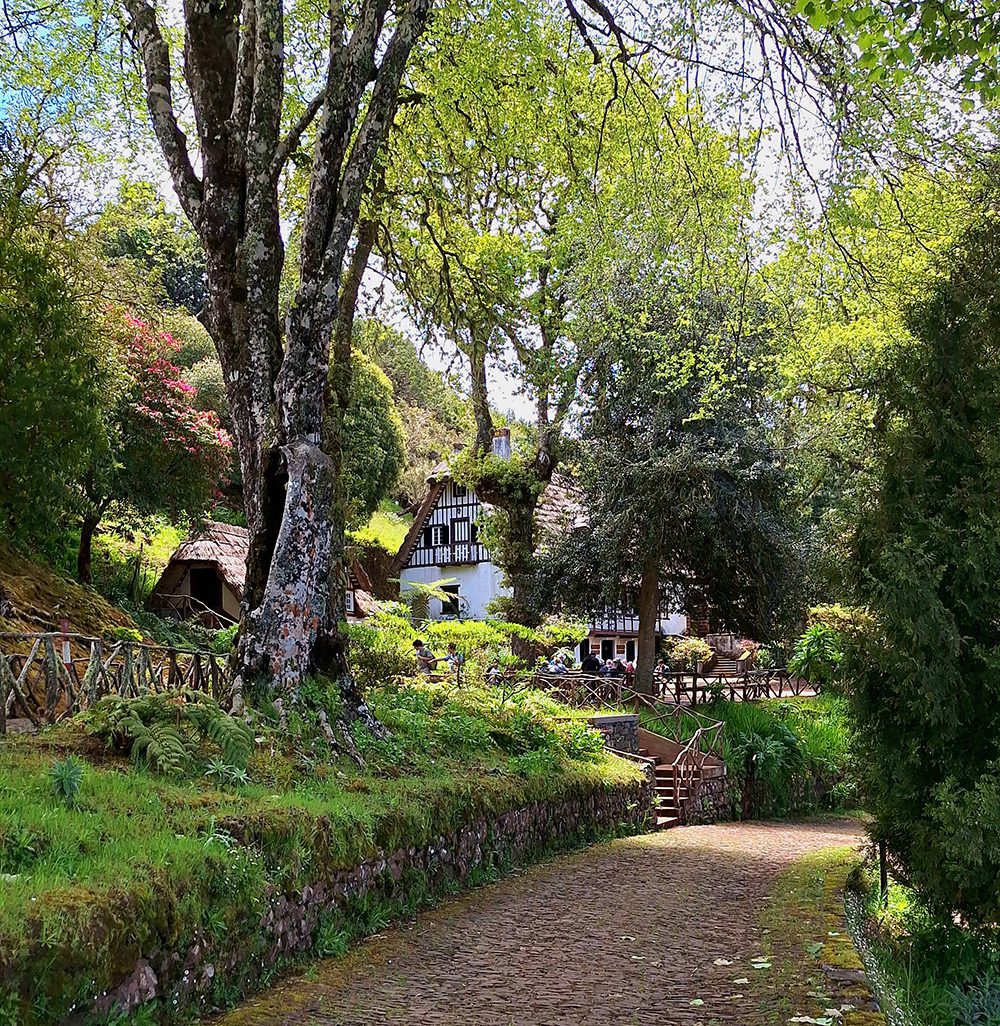
The beginning of this hike starts at a charming coffee shop in the forestry park, Queimadas, in Santana. This is a Levada trail, meaning it’s not a mountaintop hike but rather a walk through beautiful green landscapes. This trail has several small waterfalls along the way and is very popular and crowded, and it’s also one of the longest trails in Madeira.
It’s 8.7 km (5.4 miles) one way and takes about 3 hours one way. The road to the start of the trail is narrow and winding, meaning it’s a bit challenging to get there, especially during peak hours when the parking lot is already full and people park on the street.
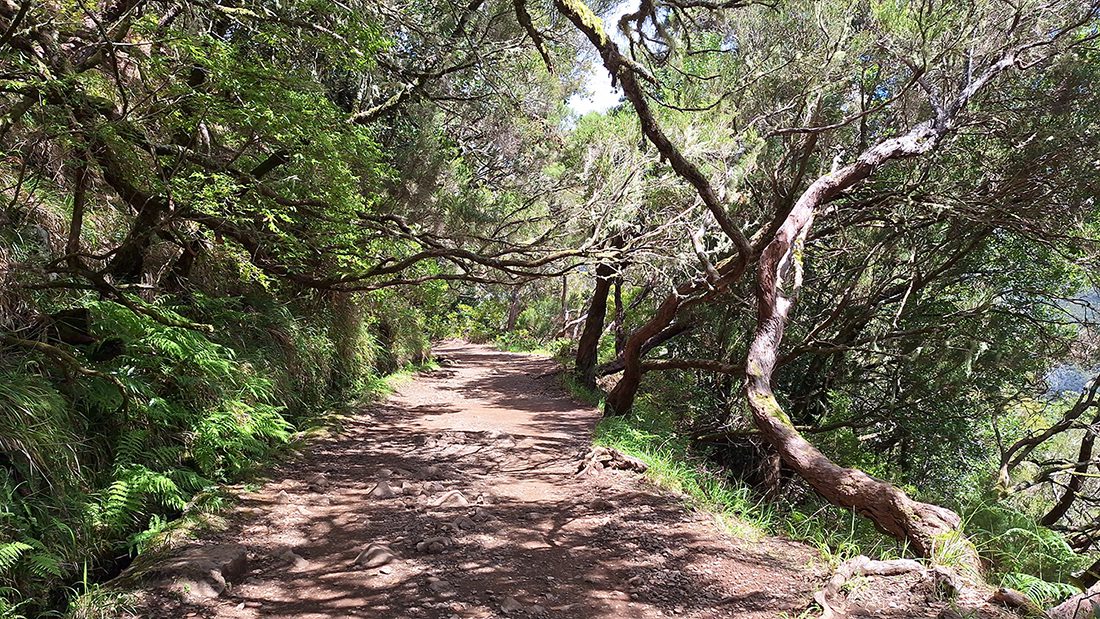
The Levada das 25 Fontes trails are relatively easy short trails that branch off into specific trails like PR 6.1, PR 6.2, PR 6.3. They are all levada hikes, aka through green areas rather than mountain peaks.
The PR 6.1 (Levada do Risco) has a coffee shop and bathroom, and it has a short trail leading to a tall waterfall. The trail is about 1.5 km (0.93 miles) one way and takes less than an hour to reach the end.
The PR 6.2 (Levada do Alecrim) is about 3.5 km or 2.1 miles one way (takes about 1.5 hours one way) and offers views of the Rabaçal valley.
The PR 6.3 trail (Vereda da Lagoa do Vento) leads to a small natural pool with a waterfall. It’s 1.8 km long (1.1 miles) and takes about 1 hour one way.
Located near the PR 6 hikes, this hike provides an eerie vibe when the fog descends into the forests. It’s best to go early because it’s impossible to find parking nearby, and the road is lined up with cars. Early morning also means more fog, which makes the forest look mysterious and supernatural.
It’s a long hike of about 10 km (6 miles) and takes about 4 hours, but you don’t have to do the full hike to see parts of the forest.
Madeira is not a beach destination, because all of its natural beaches are black sand beaches with pebbles instead of sand. These beaches are nonetheless beautiful, but they are not the main attractions of Madeira, and walking on those pebbles hurts. The most famous black sand beach is in Seixal.
There are a few man-made sandy beaches like Praia de Machico and Praia da Calheta. They are the more “typical” beaches one might expect from a subtropical island, and you can swim there, but I wouldn’t go to Madeira just for that.
If you really want some relaxing beach time, there is a second island that forms part of the Madeiran archipelago, Porto Santo. It’s reachable by a 2-hour ferry from the main island of Madeira, and it has one long stretch of beautiful white-sand beach.
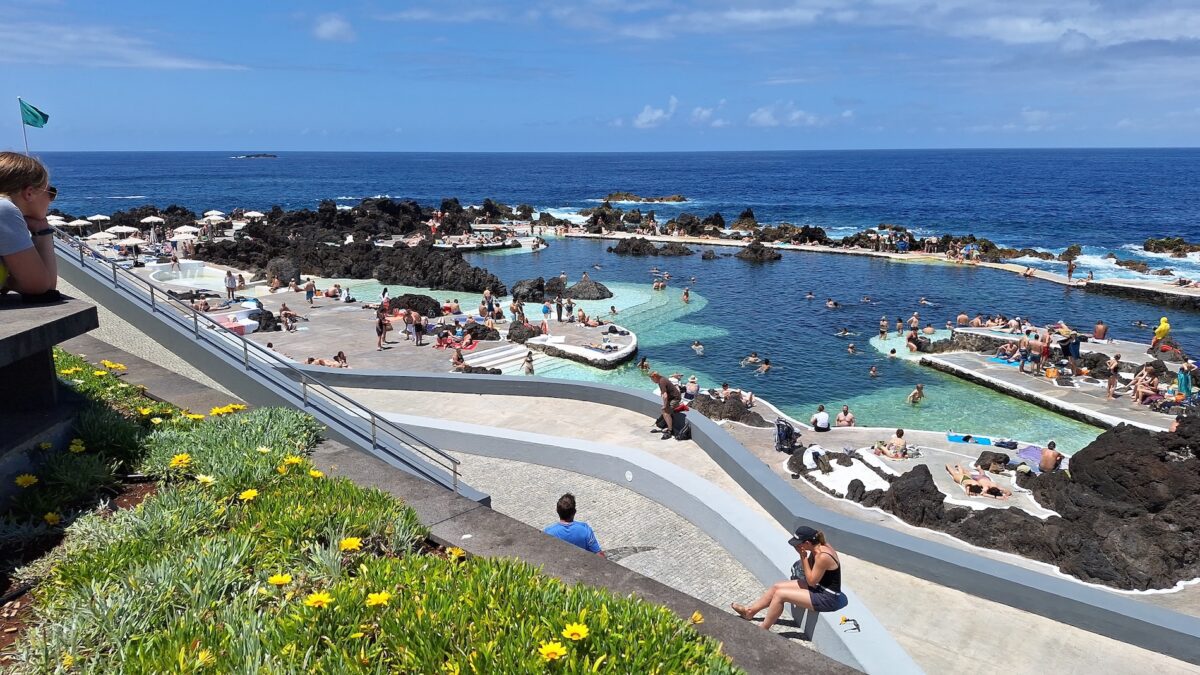
If you’re keen to swim but not interested in Madeira’s beaches, there are several natural pools to relax in. In the cute, lovely town of Porto Moniz, the Piscinas Naturais do Aquário is free, but isn’t maintained. On the other hand, the Porto Moniz Natural Swimming Pool has a very small entry fee and is regularly maintained. The latter is often very crowded.
Seixal town also has a natural pool. I liked the free one at Porto Moniz, but my issue is that neither of them has much privacy because anyone from the street above can look in.
Madeira is one of the best places to see dolphins and whales, as some species, like bottlenose dolphins and pilot whales, can be seen year-round. Migratory species like fin whales and humpback whales can only be seen at specific times of the year, usually during the spring and early summer. More info here.
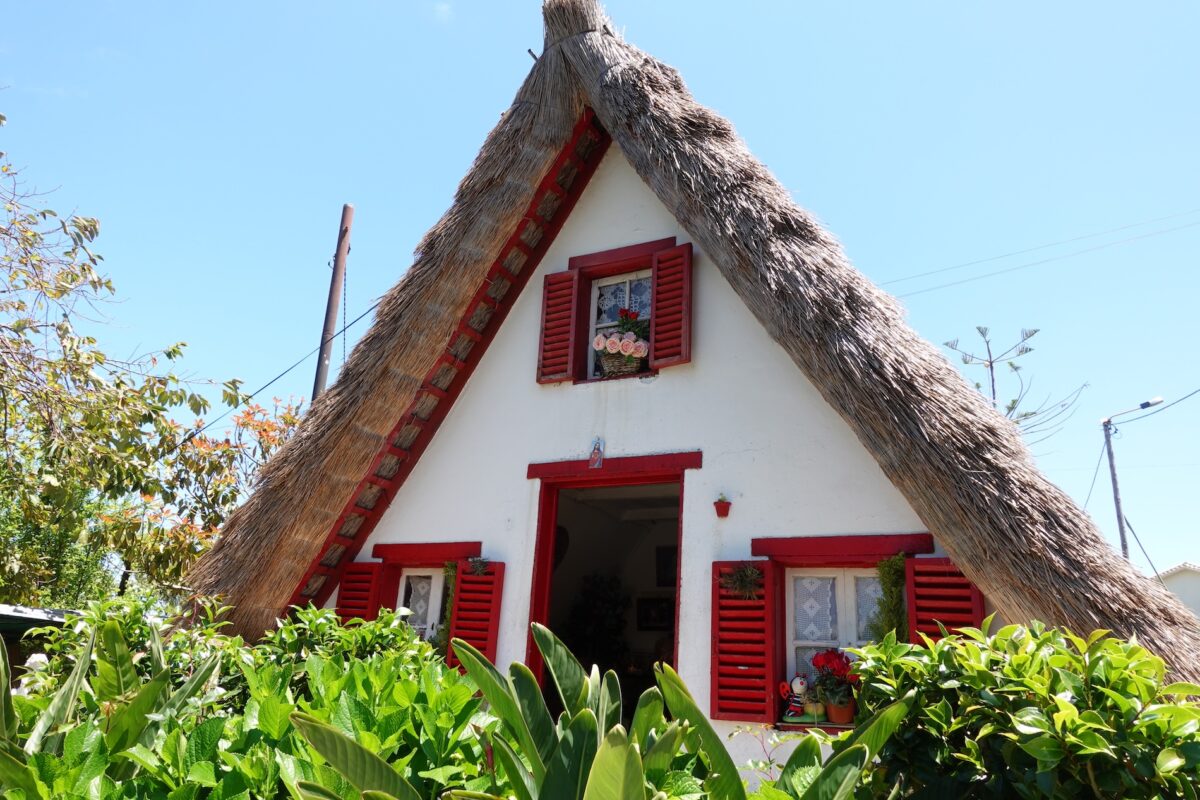
Madeira is a Portuguese territory, and therefore, you will find mostly Portuguese culture there. However, Madeira has its own unique cultural heritage to explore, the most popular one being the traditional thatched houses in Santana (Casas Típicas de Santana).
Insider tip: the houses at Praça de Santana are not original houses. They were created for tourists, and inside are souvenir shops. You can still have a look (though there will be lots of people), but make sure to stop at the real house down the road (full address: R. Dr. João Abel de Freitas Médico 2, Santana).
The original owners are still there (though they don’t live in the house anymore) and are happy to welcome people with coffee and share their stories. They do this for free, but it’s recommended (and polite) to leave a tip.
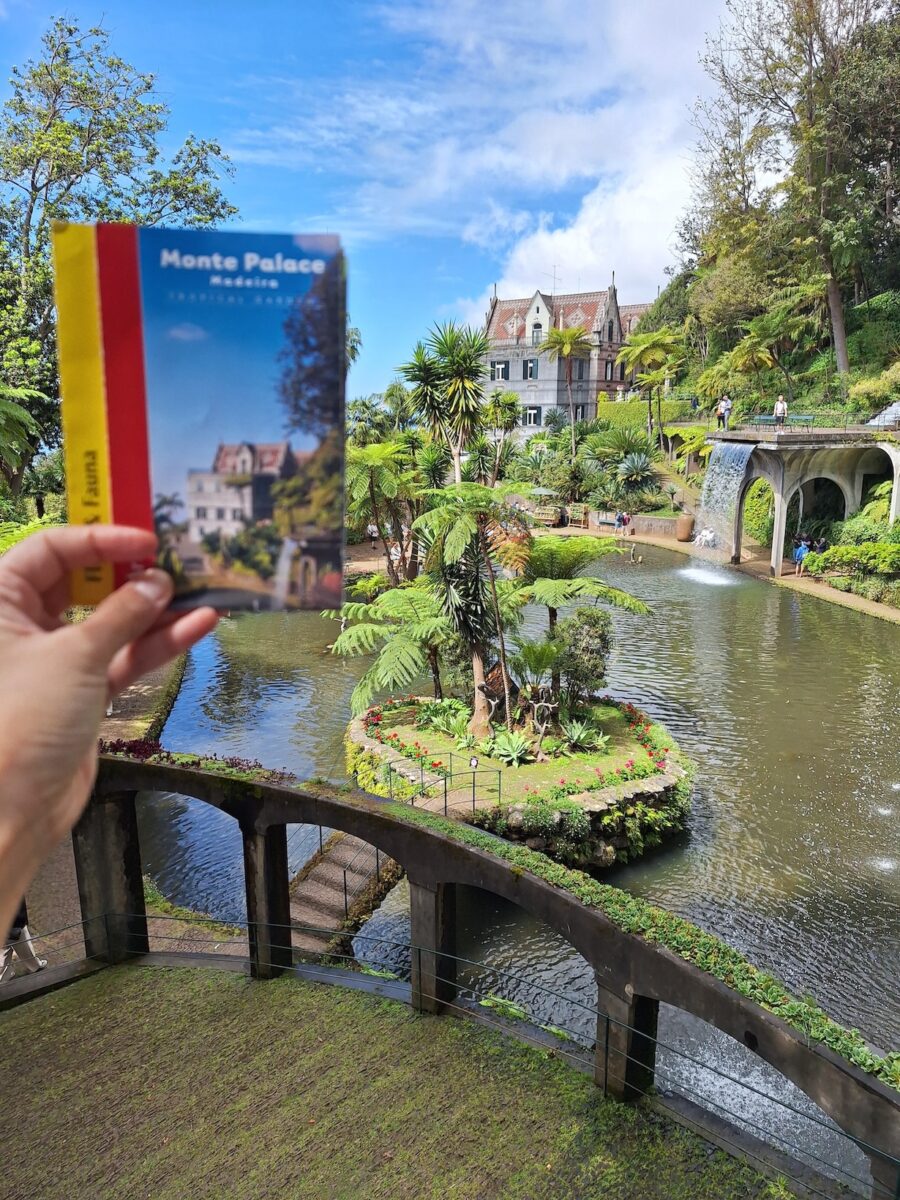
Madeira is where you go to explore natural landscapes rather than being a city destination. Nonetheless, the capital city of Funchal is a charming city with a variety of attractions.
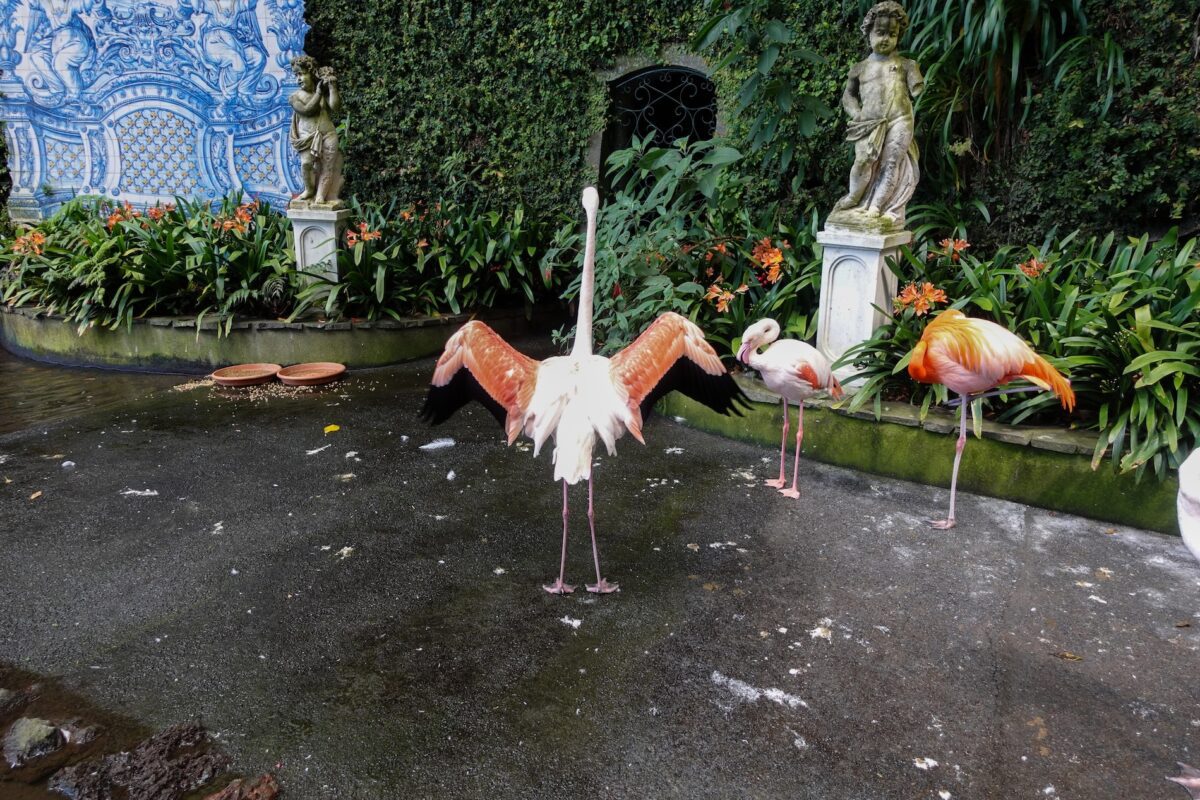
The Monte Palace Tropical Garden is a gorgeous and huge garden, but I would recommend skipping this because of animal ethics, more specifically, the flamingoes’ sad enclosure. It’s a tiny enclosure, and people get really close to the flamingoes for photos. The flamingoes were clearly distressed and kept trying to fly off, but it looked like their wings were clipped.
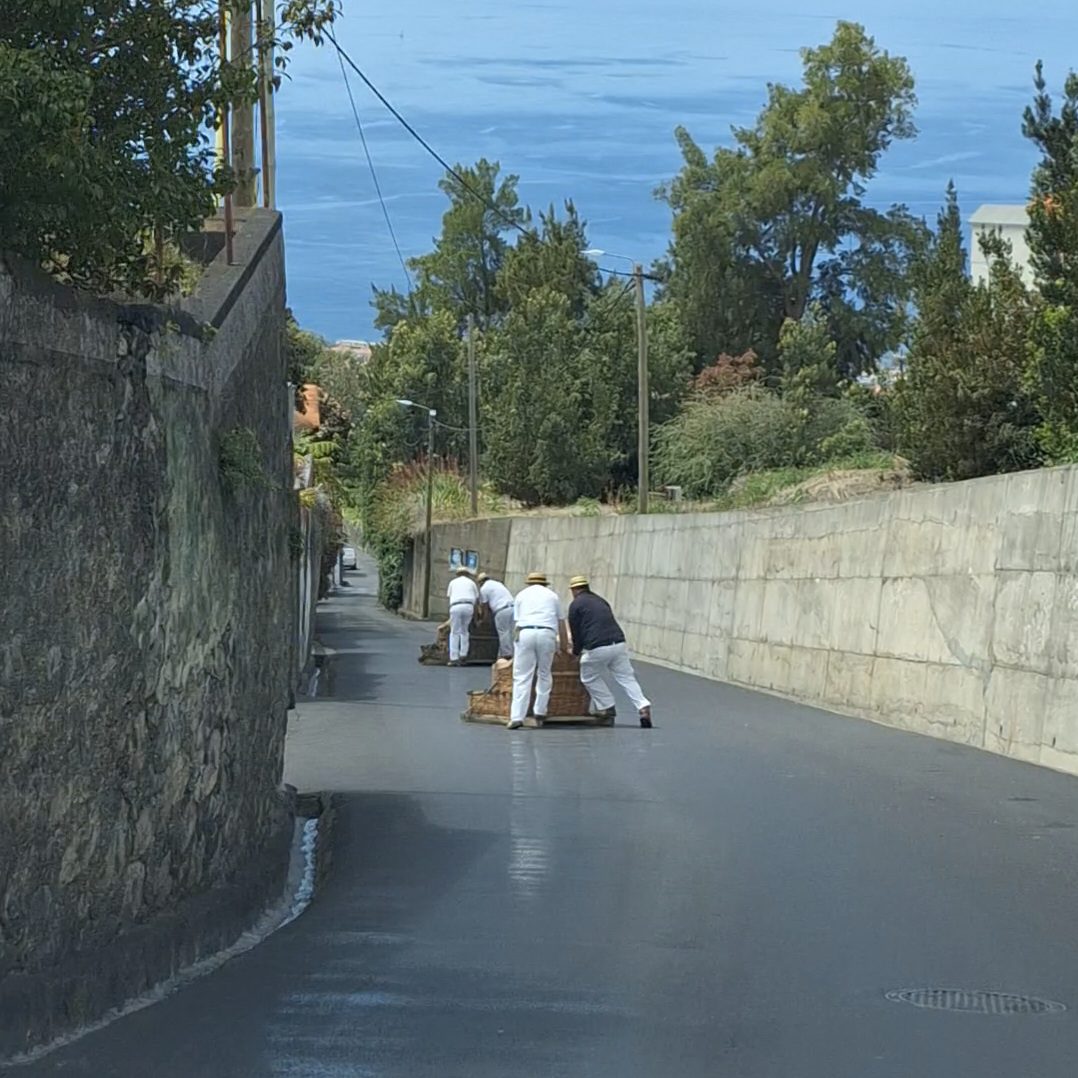
These are the wicker baskets (toboggan rides) that take you around the Monte Palace area, on the same roads used by vehicles. It looks like fun, but I personally was not interested in partaking. It’s a bit expensive (around €38 for 2 ppl excluding the photo and tip), and it felt like a tourist trap.
The Botanical Garden has carefully curated lawns and landscaped areas, as well as a herbarium and the Natural History Museum. I read it also has “exotic birds” which sounded like birds kept in captivity, and I was a tad concerned it would be similar to the flamingo situation at Monte Palace. If you’re visiting, plan to spend at least half a day there.
The Quinta do Palheiro is a hidden gem as it’s less popular than Monte Palace and Botanical Gardens, but also very beautiful.
A popular market in Funchal, this mercado is a good place for souvenirs and local produce, although I found it a bit of a tourist trap with high prices.
A tiny island next to the main island of Madeira, Porto Santo can be reached by flight or a 2.5-hour ferry. It’s a very small island, and most people go there for a day trip. There are some hiking opportunities, and one stretch of beach. I personally skipped it because I did not want to rush my time on the mainland, and there was nothing too special that justified a trip there.
Madeira’s main attractions are its multiple hiking trails with diverse landscapes ranging from mountain peaks to green forests and waterfalls.
Madeira is not a beach destination, though it does have beaches. Most of its beaches are black sand beaches with pebbles, and there are a few manmade sandy beaches.
If you don’t feel like hiking but still want to see great views, look for miradouros. On Google Maps, you will easily find multiple recommendations.
Some of my favourite miradouros:
Being a subtropical island, Madeira is a year-round destination, though it does get a bit rainy and mildly cold during the winter months, and quite hot and crowded during summer. The best time to go is during spring and autumn.
If you want to explore the whole island and do things at a leisurely pace for a more sustainable trip, I recommend about 6 days in Madeira.
